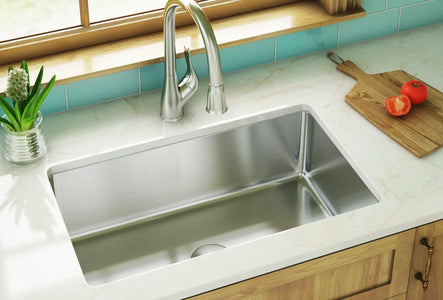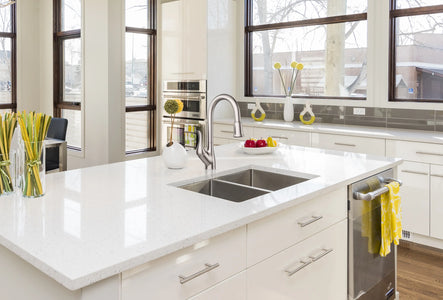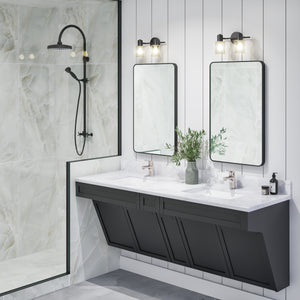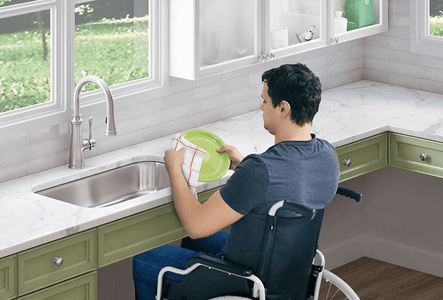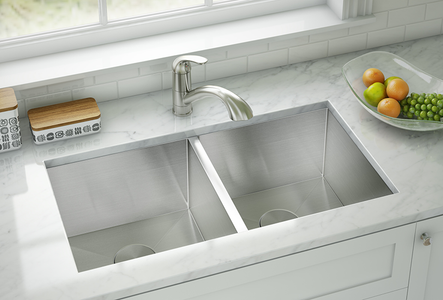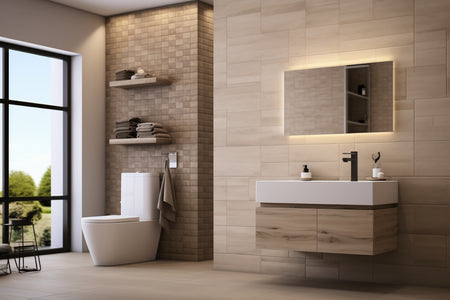What is Sink Radius? Selecting the Right One

Selecting the right radius
For contractors, fabricators, and others who frequently deal with kitchen sinks, radius is a common term. For others, radius, in the context of a sink, is likely a complete mystery. If you’re reading this, then your probably in the latter group and find yourself scratching your head as to what radius means and why it matters.
The Basics

Radius refers to the angle of the corners in a sink; this small distinction can completely alter the look, style, and functionality of a sink. You are likely familiar with the radius of standard sinks, the everyday, typical sink you have seen thousands of times. Of course, you’ve also never referred to those corners as being a radius of 80 or 85 because manufacturers don’t advertise the radius of a standard sink.
In summary, a sink’s radius represents the angle of all the corners.
The Range of Radius
Now that you know what radius means, what varieties of radius exist, and how can you transform your kitchen by selecting the right radius? We already learned that standard sinks share a common radius, and between various brands, you’ll likely not see a noticeable difference. Standard sinks are perfect for complimenting a kitchen with a more subdued and traditional theme. If you’re looking to alter the look of your kitchen using a rustic or modern theme, it is critical to understand the radius options that exist beyond standard sinks.
Starting from Zero

Are you looking to transform your kitchen from average to extraordinary or capture the feel of a professional kitchen? Start from zero by looking at sinks with a zero radius. Every corner in a zero radius kitchen sink measures 90 degrees, creating sleek and dramatic lines. In combination with a modern or industrial faucet design, you’ll create an environment perfect for a home chef.
If you intend to make the jump from a standard to zero radius sink, you should know that additional upkeep will be required. The gentle curves of a standard sink result in a design that drains effortlessly, however, zero radius sinks feature straight sides and a flat basin. Water will pool on the bottom of a zero radius sink, and you’ll need to wipe the surface down to avoid water spots. And with 90-degree radius corners, you also need to invest some extra time making sure to remove any residue or debris.
The Tight Radius

Perhaps the thought of spending additional time cleaning your kitchen sink isn’t your ideal way to spend your free time, but you want your kitchen to make a statement. You can capture that professional look and save yourself time by selecting a kitchen sink with radius 15 corners. This radius offers a departure from the traditional standard sink, yet the corners are slightly rounded reducing the time spent keeping your sink clean.
Standard Radius

Standard radius sinks are the least complicated of any of the radius we will cover today. For most of our readers, the standard radius is synonymous with every kitchen sink they have used or own. Gradual sloping corners that direct water to the drain is the hallmark of standard sinks. If you're opting for the classic and traditional look, you're in luck, the majority of sinks will complement your design perfectly.
The Perfect Compromise

Not ready to jump into the realm of tight or zero radius sinks, yet you want to give your kitchen a decidedly distinct look? We’d suggest that you consider sinks with radius 25 corners. This style of sink is the perfect compromise between traditional and modern sinks. You get the ease of maintenance found in standard sinks, while still increasing usable space and capturing a modern and professional look.
Shop Today
Now that you understand the term radius and how you can use it to enhance your kitchen design, start shopping for your perfect kitchen stainless steel sink today.
The latest tips, straight to your inbox
RELATED POSTS
- Mixing Materials: How to Create Beautiful Multifamily Units with Unique Kitchen Sinks
- Best Kitchen Sink Materials for New Multifamily Constructions
- 2024 Most In-Demand Kitchen and Bathroom Fixtures for Multifamily Buildings
- ADA Vanity Sinks for Multifamily Builds
- ADA Faucets - Choosing Accessible and Aesthetic Designs
- The Ultimate Guide to Kitchen Faucets for Multifamily Buildings
- The Ultimate Guide to Designing an ADA Compliant Bathroom


